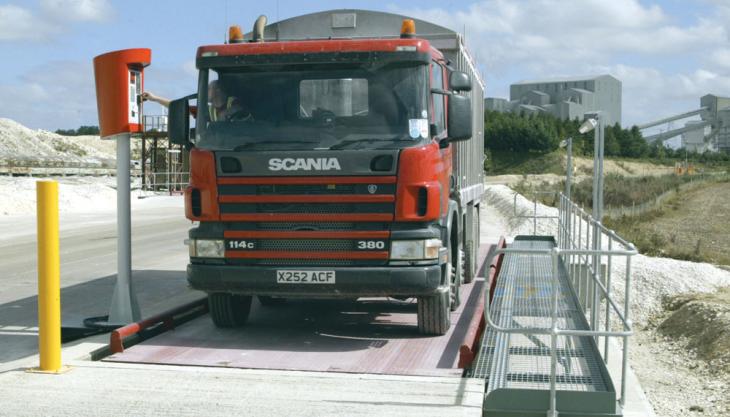Safety first for weighbridge installations

Health and safety considerations should be high up on the list when specifying a weighbridge, argues Rob Clarey, national sales manager for Avery Weigh-Tronix, who says it is a key area for a risk assessment at most quarries.
According to the Health and Safety Executive, transport accidents are one of the most common causes of accidents in the workplace. Although the number of such incidents is relatively low, the consequences are frequently severe.
As in any risk assessment, health and safety managers must consider potential hazards and minimize their affects. For most quarries the weighbridge is the first and often the last place that a heavy goods vehicle will visit. They are a key area because at peak times they can cause a bottleneck and drivers may be tempted to leave their vehicles to stretch their legs.
With health and safety in mind, what factors should quarry operators consider when installing a weighbridge?
First, the access to the weighbridge should be simple and straightforward. Clear signage should indicate where the weighbridge is and outline what drivers must do. Traffic should always be controlled to ensure correct queuing. Access barriers, traffic lights and digital cameras can all be used as part of such a system to help control traffic flow, prevent accidents and monitor safety.
At a busy site the installation of separate weighbridges for incoming and outgoing traffic should be considered. This helps to establish a clear one-way traffic flow, avoids confusion and potentially halves the number of vehicles at each weighbridge.
For the weighbridge installation itself the aim is to create a zero-risk environment for the driver with no slips or falls or pedestrian collisions with traffic. In addition, any means of speeding up the weighing process will lead to smaller queues and less chance of an accident occurring.
The best answer is to design a system where there is no need for the driver to leave the cab, and there are several potential solutions.
Installing a driver-operated console at cab height allows the driver to enter data using either a swipe card and/or a keypad or touchscreen. Such systems must be simple and intuitive to use, have large graphical characters and a clear display. Modern-day systems should also have a multilingual interface to avoid potential misunderstandings by foreign drivers.
Other more recent technology uses automatic number plate recognition to make data collection simpler, more accurate and faster. Typically, a vehicle will approach the weighbridge and the camera will record its registration number. Once the system recognizes the vehicle it will be weighed and processed.
There may be times when the driver has to leave his or her cab, so it is still essential to provide a safe area on to which to dismount. By installing an extra-wide weighbridge – Avery Weigh-Tronix manufacture them up to 4.5m in width – plenty of room is provided for dismounting on to a flat non-slip surface. As part of a site’s general housekeeping arrangements, this surface should be kept clear of debris to avoid slips and trips.
In addition, pathways and steps should be of good construction with handrails and safety barriers, and again they should be kept free from ice, mud and other contaminants. The HSE also suggests paying attention to lighting levels and painting step nosings with high-visibility paint. Footscrapers/scrubbers to minimize the transfer of mud should also be considered, and a good stiff broom can also be very useful.
Weighbridges are a critical part of the quarry. They form a vital component of a management information system that runs to the core of the operation. A well-designed system will reduce queues of traffic and ensure that the driver stays in the safety of his or her cab, as well as keeping both the company accountant and the HSE happy.
Avery Weigh-Tronix Ltd, Foundry Lane, Smethwick, West Midlands B66 2LP; tel: (0870) 905 0060; fax: (0121) 224 8122.

